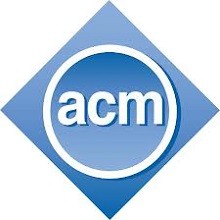
به حداقل رساندن مجموعه های آزمون در خطوط تولید نرم افزار
چکیده
هدف تکنیک های به حداقل رساندن آزمون، شناسایی و حذف آزمون های اضافی از مجموعه های آزمون برای کاهش تعداد کل آزمون های اجرایی، و بنابراین بهبود کارآیی آزمون می باشد. در مورد خط محصول نرم افزار، می توانیم در انتخاب و به حداقل رساندن موارد آزمون برای آزمایش یک محصول خاص با مدل سازی خط محصول، برای صرفه جویی در هزینه تلاش کنیم. با این حال، به حداقل رساندن مجموعه آزمون برای یک محصول مستلزم بررسی دو مسئله بالقوه است: 1) مجموعه آزمون حداقل شده، در مقایسه با مجموعه اصلی، نمی تواند شامل همه الزامات آزمون باشد؛ 2) ممکن است مجموعه آزمون حداقل شده، قابلیت تشخیص خطای کم تری نسبت به مجموعه اصلی داشته باشد. در این مطالعه، از الگوریتم های ژنتیک مبتنی بر وزن (GAs) در به حداقل رساندن مجموعه آزمون برای آزمایش یک محصول استفاده می شود، در حالی که قابلیت تشخیص خطا و پوشش آزمایش مجموعه آزمون اصلی حفظ می شوند. چالش اصلی، تعریف یک تابع تناسب مناسب است که می تواند پوشش معیارهای آزمایش پیچیده را حفظ کند (به عنوان مثال، معیار آزمایش تعامل ترکیبی). بر اساس تابع تناسب تعریف شده، سه GAs مبتنی بر وزن متفاوت به صورت تجربی در یک مطالعه موردی صنعتی ارائه شده توسط شرکت سیستم های سیسکو در نروژ ارزیابی شده اند. علاوه بر این، نتایج اعمال سه GA مبتنی بر وزن در پنج مطالعه موردی از ادبیات ارائه شده اند. بر اساس این مطالعات موردی، نتیجه می گیریم که در میان سه GA مبتنی بر وزن، GA با وزن تصادفی (RWGA) نسبت به سایر موارد، به عملکرد بهتری دست یافته است.
مقدمه
مهندسی خط تولید نرم افزار (SPLE) با بهره برداری و مدیریت مشترکات و متغیر ها در میان تعداد زیادی از محصولات، در حال تبدیل شدن به یک روش مقرون به صرفه برای توسعه محصولات مشابه است. SPLE در دانشگاه و صنعت، مزایای امیدوار کننده ای را نشان داده است، مانند کاهش زمان و هزینه توسعه، تسریع زمان ارائه محصول به بازار و بهبود کیفیت محصولات یک خانواده خط محصول.
ABSTRACT
Test minimization techniques aim at identifying and eliminating redundant test cases from test suites in order to reduce the total number of test cases to execute, thereby improving the efficiency of testing. In the context of software product line, we can save effort and cost in the selection and minimization of test cases for testing a specific product by modeling the product line. However, minimizing the test suite for a product requires addressing two potential issues: 1) the minimized test suite may not cover all test requirements compared with the original suite; 2) the minimized test suite may have less fault revealing capability than the original suite. In this paper, we apply weight-based Genetic Algorithms (GAs) to minimize the test suite for testing a product, while preserving fault detection capability and testing coverage of the original test suite. The challenge behind is to define an appropriate fitness function, which is able to preserve the coverage of complex testing criteria (e.g., Combinatorial Interaction Testing criterion). Based on the defined fitness function, we have empirically evaluated three different weightbased GAs on an industrial case study provided by Cisco Systems, Inc. Norway. We also presented our results of applying the three weight-based GAs on five existing case studies from the literature. Based on these case studies, we conclude that among the three weight-based GAs, Random-Weighted GA (RWGA) achieved significantly better performance than the other ones.
1. INTRODUCTION
Software Product Line Engineering (SPLE) is becoming a costeffective way to develop similar products by exploiting and managing commonalities and variabilities among a large number of products [1][2]. SPLE has shown promising benefits in both academia and industry such as reducing development time and costs, speeding up product time-to-market and improving the quality of products of a product line family [2].
چکیده
مقدمه
زمینه
مجموعه آزمایش بر اساس FM و CFM
توضیحات GA های مبتنی بر وزن انتخاب شده
توضیح مشکل و تابع تناسب
توضیح مشکل
تعاریف و کارکرد های سه هدف
قابلیت تشخیص خطا (FDC)
تابع تناسب
مطالعات موردی و ارزیابی تجربی
مطالعات موردی
مطالعه موردی صنعتی
ارزیابی تجربی
سوالات تحقیق
تنظیمات آزمایش
آزمون های آماری
نتایج و تجزیه و تحلیل
تهدیدات مربوط به اعتبار
مطالعات مرتبط
نتیجه گیری و مطالعات آینده
ABSTRACT
1. INTRODUCTION
2. BACKGROUND
2.1 Test Case Selection based on FM and CFM
3. PROBLEM REPRESENTATION AND FITNESS FUNCTION
3.1 Problem Representation
3.2 Definitions and Functions for Three Objectives
3.3 Fitness Function
4. CASE STUDIES AND EMPIRICAL EVALUATION
4.1 Case Studies
4.2 Empirical Evaluation
5. THREATS TO VALIDITY
6. RELATED WORK
7. CONCLUSION AND FUTURE WORK
- ترجمه فارسی مقاله با فرمت ورد (word) با قابلیت ویرایش، بدون آرم سایت ای ترجمه
- ترجمه فارسی مقاله با فرمت pdf، بدون آرم سایت ای ترجمه
